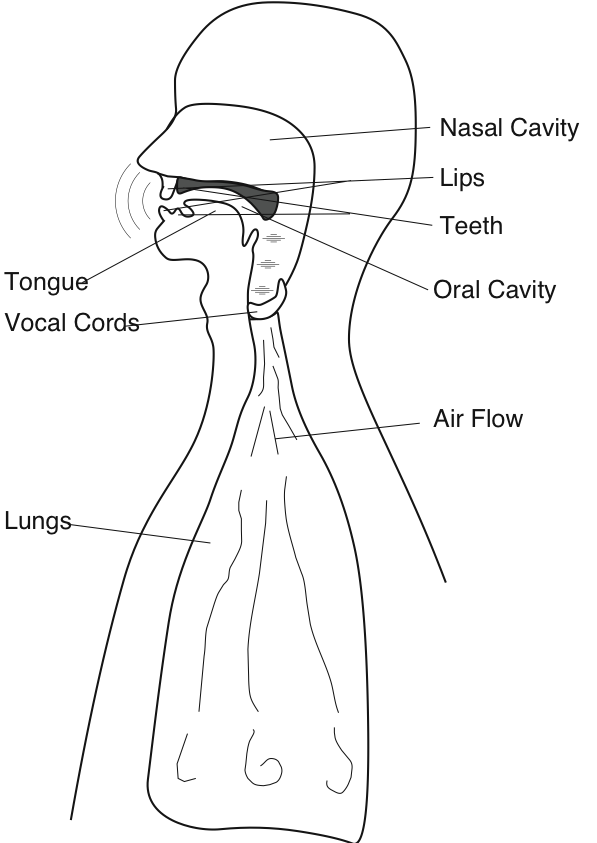| << Chapter < Page | Chapter >> Page > |


The information contained in the spoken word is conveyed by the speech signal. Because we shall analyze several speechtransmission and processing schemes, we need to understand the speech signal's structure -- what's special about the speechsignal -- and how we can describe and model speech production. This modeling effort consists of finding a system's description of how relatively unstructured signals,arising from simple sources, are given structure by passing them through an interconnection of systems to yield speech. Forspeech and for many other situations, system choice is governed by the physics underlying the actual production process. Becausethe fundamental equation of acoustics -- the wave equation -- applies here and is linear, we can use linear systems in ourmodel with a fair amount of accuracy. The naturalness of linear system models for speech does not extend to other situations. Inmany cases, the underlying mathematics governed by the physics, biology, and/or chemistry of the problem are nonlinear, leavinglinear systems models as approximations. Nonlinear models are far more difficult at the current state of knowledge tounderstand, and information engineers frequently prefer linear models because they provide a greater level of comfort, but notnecessarily a sufficient level of accuracy.
[link] shows the actual speech production system and [link] shows the model speech production system. The characteristics of the model depends on whether you are saying a vowel or a consonant. Weconcentrate first on the vowel production mechanism. When the vocal cords are placed under tension by the surroundingmusculature, air pressure from the lungs causes the vocal cords to vibrate. To visualize this effect, take a rubber band andhold it in front of your lips. If held open when you blow through it, the air passes through more or less freely; thissituation corresponds to "breathing mode". If held tautly and close together, blowing through the opening causes the sides ofthe rubber band to vibrate. This effect works best with a wide rubber band. You can imagine what the airflow is like on theopposite side of the rubber band or the vocal cords. Your lung power is the simple source referred to earlier; it can bemodeled as a constant supply of air pressure. The vocal cords respond to this input by vibrating, which means the output ofthis system is some periodic function.

Notification Switch
Would you like to follow the 'Fundamentals of electrical engineering i' conversation and receive update notifications?